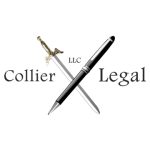Mergers and Acquisitions: Valuation Methods and Definitions

What are the different mergers and acquisitions (M&A) valuation methods?
- price to earnings ratio
- enterprise-value-to-sales ratio (EV/Sales)
- Discounted cash flow (DCF)
- free cash flows
- weighted average cost of capital
- replacement cost
Price to earnings ratio
According to our business attorneys, price to earnings ratio (p/e) is a ratio that measures a company’s current share price relative to its earnings per share (EPS). The share price is the market price per share of stock. The earnings per share (EPS) is the company’s revenue divided by the number of outstanding shares. The price to earnings ratio is commonly used by investors because it easily compares a company’s asking price relative to its earnings in its industry.
Enterprise-value-to-sales ratio (EV/Sales)
The enterprise-value-to-sales ratio valuation method compares the EV (enterprise value) of a company to its annual sales. The company EV takes into account market capitalization, short-term and long-term debts, and cash on hand. This valuation gives potential buyers of a company a good understanding of the financial position they would be taking over.
Discounted cash flow (DCF)
Discounted cash flow (DCF) is a valuation method based on an estimation of a company’s future cash flow. The valuation method takes the future estimated cash flow and applies a discounted rate to the earnings to value the company today.
Free cash flow
Free cash flow (FCF) is a valuation method based on a company’s cash generated vs cash expenses. Non-cash expenses are excluded and cash expenses are included in the valuation. This valuation method is used to evaluate a business’ cash performance.
Weighted average cost of capital
The weighted average cost of capital (WACC) is the average cost of obtaining capital from all sources. This included debt such as common/preferred stock, bonds, etc. This valuation method shows investors the required rate of return on their investment.
Replacement cost
Replacement cost is a method of valuing an asset that yields income, such as real estate. The replacement value, or net present value (NPV), is a calculation based on the income yield of the asset, the expenses of the asset, depreciation, and the asset’s estimated useful life.
How mergers and acquisitions (M&A) are financed
- liquidate
- reverse merger
Liquidation
Liquidation is the process of terminating a business, selling off all of the business’ assets, and paying off all liabilities. Liquidation can finance a merger or acquisition by providing capital to the acquiring company or by providing a straightforward transaction through which the acquiring company pays the target company directly for the target company’s assets.
Reverse Merger
A reverse merger is a way for a private company to go public without an IPO. The private company purchases the stock of a publicly traded company, then shareholders exchange stock from the private company to the public company. Thus, the private and public companies merge and utilize the public company’s stock listed on the public stock exchanges. This allows the private company to sell stock on the open market without the time or expense of preparing for an IPO.
How are shareholders affected by mergers and acquisitions (M&A)
- dilution
- stock-for-stock mergers
Dilution
Mergers and acquisitions can involve the issuance of new stock, whether to the purchasing company or a related IPO. By issuing new stock, the company dilutes or reduces the percentage of ownership each prior stock held, as it will be a smaller percentage of the total outstanding stock upon the new issuance.
Stock-for-stock mergers
A stock-for-stock merger is when shareholders trade their current stock for shares of stock in the surviving entity of a merger or acquisition. This type of transaction is common in a merger where a new entity is created to be the surviving entity.
Other Definitions for Valuation
- book value
- depreciation
Book Value
Book value is the cost of owning an asset, commonly weighing all of the asset’s expenses against its depreciation value. A business can be valued under the same method; weighing the tax benefits, such as accumulated depreciation, against the expenses of owning the business.
Depreciation
Depreciation is an accounting method that determines the loss of value of an asset over the useful life of the asset. The asset’s useful life is determined and a depreciation method is then chosen. Average depreciation will allocate an average loss in value to the asset each year of the asset’s useful life. Accelerated depreciation will allocate a greater loss in value during the early years of the asset’s useful life, and little or no loss in value during the remaining years of useful life. The “loss in value” is considered a business loss and reduces the business’ taxable income.
Conclusion
Mergers and Acquisitions are exciting transactions. They are also very complicated and should be approached with a skilled M&A attorney. To get the support of a top M&A law firm in Ohio, call a business lawyer at Collier Legal today. For ongoing service, contact our outside general counsel team.

About
Attorney Collier started his own law firm straight out of law school and has been practicing law in Ohio for 5+ years. During that time, Joe focused on business law and litigation, gaining some exposure to intellectual property law. While running his firm in 2021, Joe decided to go back to school and get his patent license. Since then, Attorney Collier has been focusing on protecting innovators and entrepreneurs through his expertise in intellectual property and business law.
